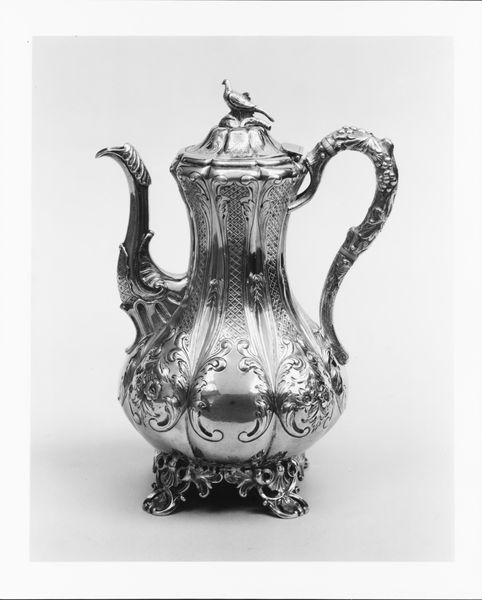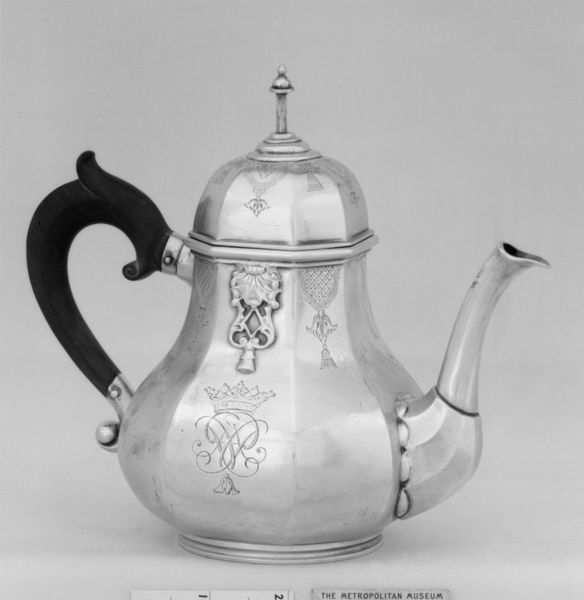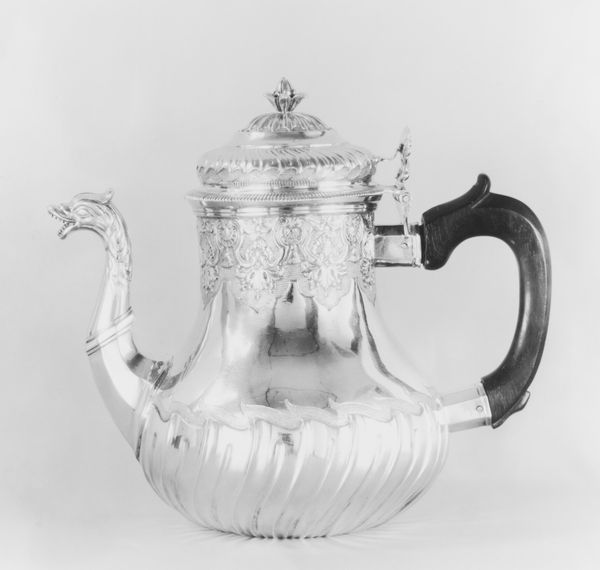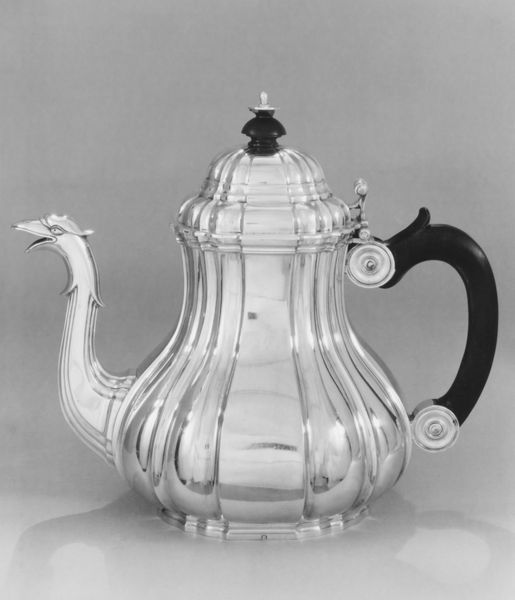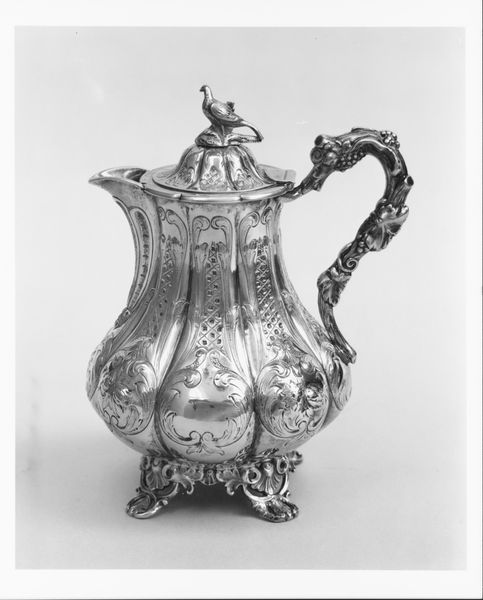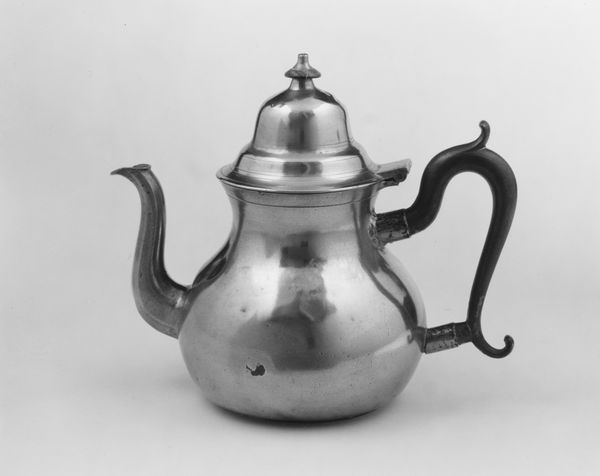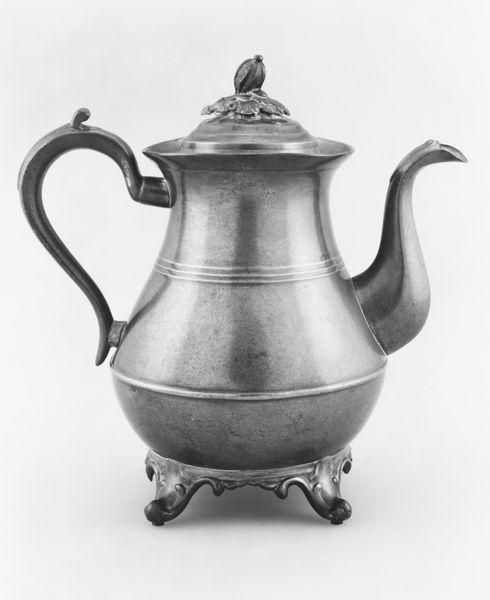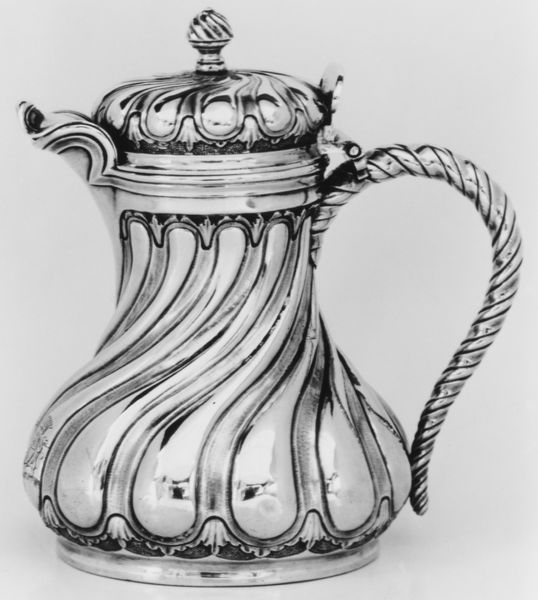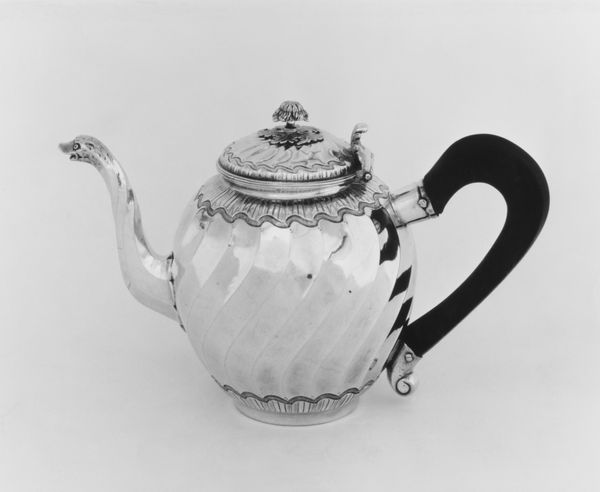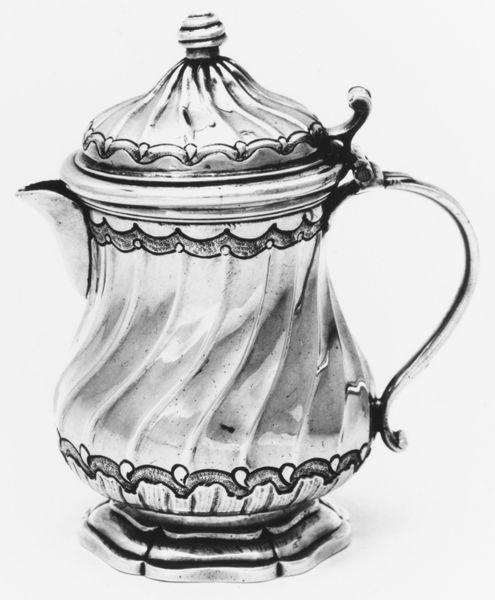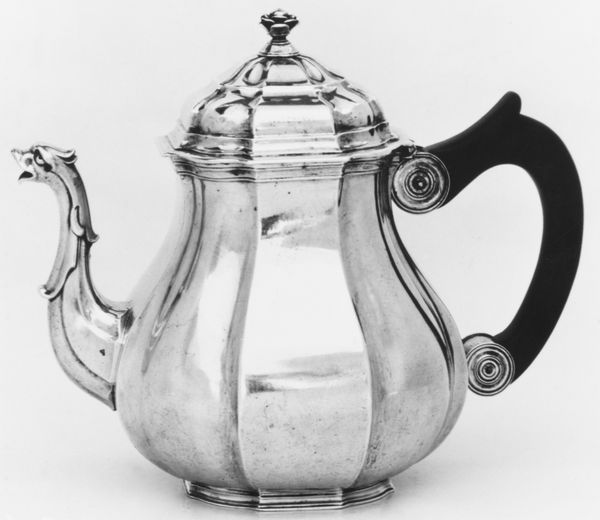
silver, metal, metalwork-silver, sculpture
#
silver
#
baroque
#
metal
#
metalwork-silver
#
sculpture
#
black and white
#
decorative-art
Dimensions: Height: 8 in. (20.3 cm)
Copyright: Public Domain
Curator: Take a look at this silver Teapot, crafted sometime between 1751 and 1761. It resides here at the Metropolitan Museum of Art. What are your initial thoughts? Editor: It's a very tactile piece. I'm immediately drawn to the sleekness of the metal, the evident labor in the curves, and the weight it must carry. There's a beautiful contrast of textures. Curator: Absolutely. This teapot is more than a functional object; it represents the Baroque period's focus on elaborate detail and status. Silverware, particularly in this era, signified wealth and social standing. The act of drinking tea itself was becoming increasingly ritualized. Editor: That's what jumps out—tea culture elevating something practical into a symbol. The material is key, isn’t it? Silver wasn't just precious; its sheen suggests hygiene and refinement, reinforcing social hierarchies around consumption. Who had access, and what did owning this teapot communicate about their place in society? Curator: Exactly! It reflected the owner's aspirations and connections to global trade networks, too. The silver might have originated in the Americas. Owning this signified that its owner has the financial status for foreign relations. Editor: The handle, though, adds an unexpected touch. Is that wood, perhaps ebony? Juxtaposing the cold, reflective metal with the warmth of wood… it speaks to me of a tension between lavish display and a connection to natural resources and craft traditions. Was it common to include wood accents at this time? Curator: While silver was the predominant material for teapots of this stature, wooden elements weren't uncommon, offering a practical element, too. Silver conducts heat very well; thus a handle like this protected the hands when serving hot tea. Editor: It all points back to the complex relationship between production, labor, and class, even within something we might take for granted. We see objects from the past on display and neglect to consider who put in hours to mine these precious materials and then transform them into functional tools with an artistic beauty to them. Curator: That is where history meets material reality and what is so enticing when examining objects such as these. There is a dialogue here between global commerce and daily ritual, shaped by both design and economic possibility. Editor: Right, the stories objects tell about production as well as consumption are essential. This wasn't merely an accessory but also a document reflecting both aesthetic values and socio-economic currents.
Comments
No comments
Be the first to comment and join the conversation on the ultimate creative platform.
